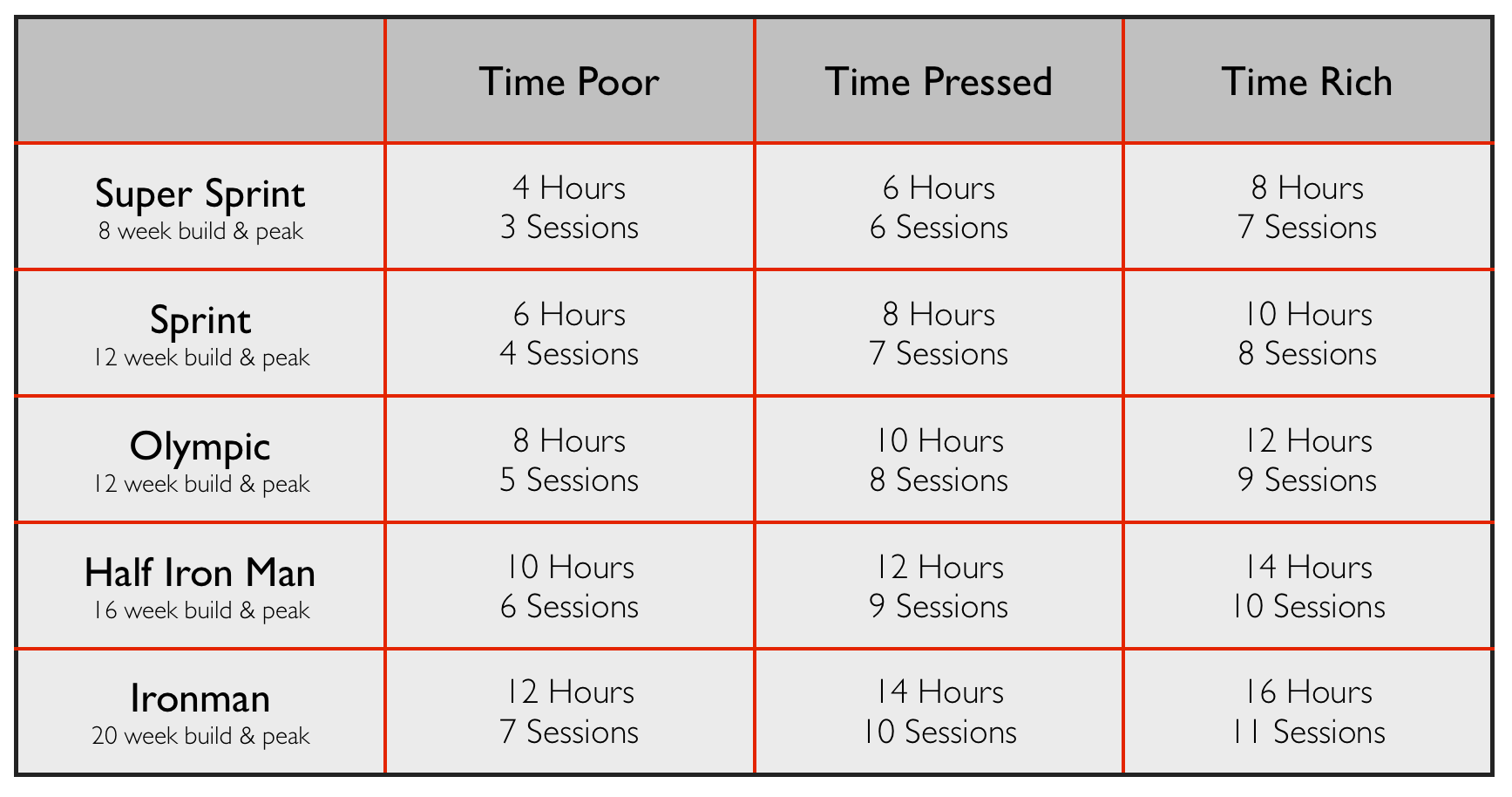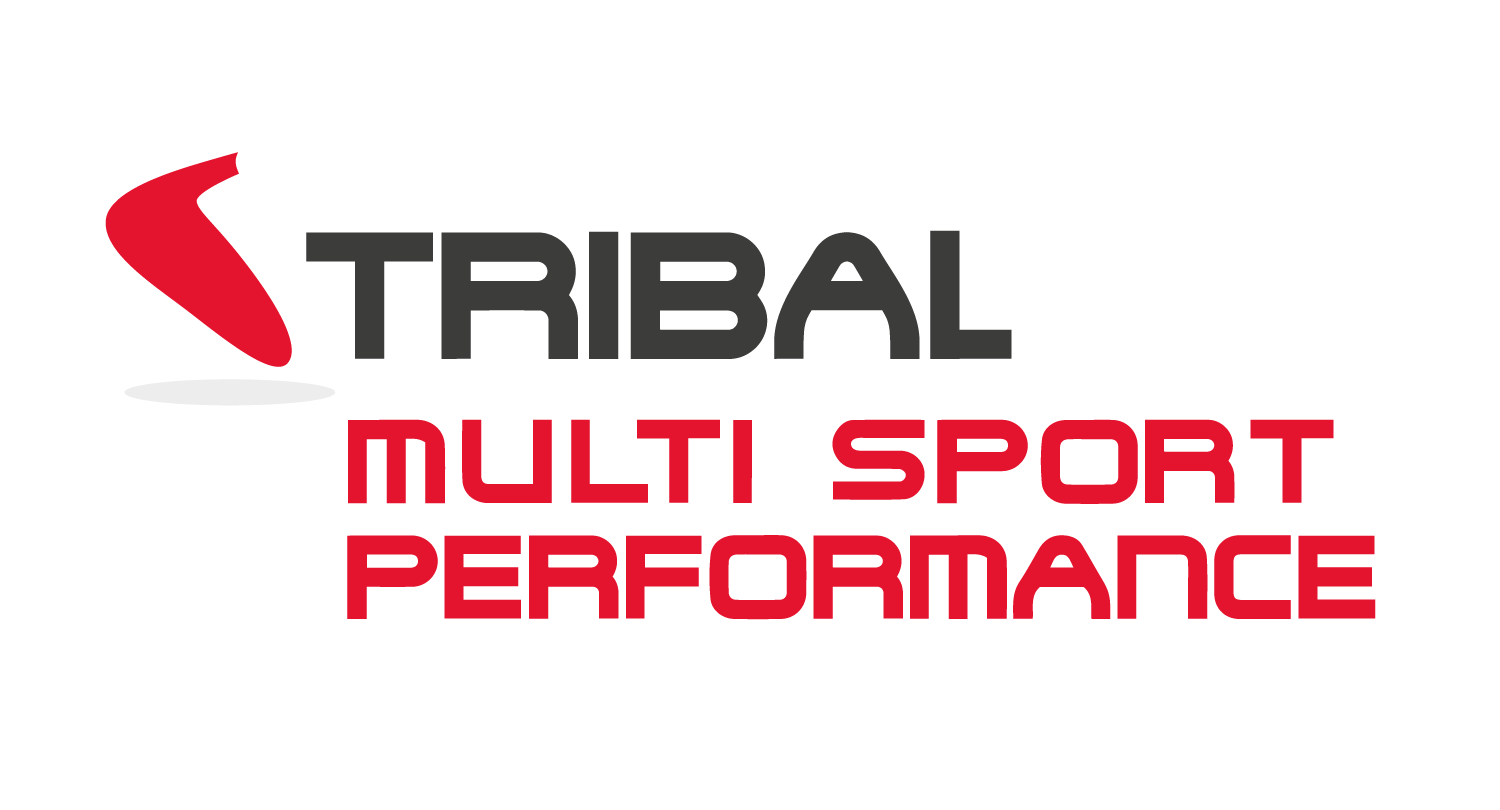Step 2- Decide Upon Available Training Time
Your training time is the gross amount of time that you have available to train each week. Once you have identified this gross time you can spend training, only then can you decide how you’re going to spend it.
Remember that we are keen to make progress; your training time is a great part of this. Always progress from the simple to the complex, the low to the high and the short to the long. Start easy and take baby steps, monitoring your reaction on the way.
Rules of training time identification
- As well as your available time, the other key factor in determining training time is your available adaptation energy. This can only be measured via trial and error, start easy and monitor your reaction as you progress.
- At Tribal we see little return on investment after the 2-hour mark, for the majority of the year cap each session at 2 hours maximum, including all aspects of the session.
- Rep ranges are prescribed for each session, the amount of reps you complete is driven by your ability to maintain form. Form lost= end of main set.
- As your adrenal glands are reactive in nature, follow the rules above to avoid over stressing the glands. A key to remember is that the stronger you are, the greater potential you have to compromise your adrenal health as you can go longer and harder in each session, treat with care
- Seek agreement from your support network. Does this level of training allow adequate time for family, work and social engagements? If you are taking on a level of training that is going to have a large impact upon any of these aspects, it is much better to speak to your loved ones, colleagues and friends first. Make sure they buy into the commitment along with you, if they don’t, you have choices and those choices are based on whether the level of resistance is reasonable or not. Are your friends, family or colleagues hecklers or cheerleaders??
Your time availability and athlete level
Your athlete level is determined by your current level of activity as well as your aspiration. Some are happy to complete, whilst others are keen to compete. It goes without saying, those keen to compete should consider the time sacrifices needed to commit.
Sedentary/ Non Exerciser=
If you haven’t exercised regularly for the past 12 months, please start by following the year round guidelines for at least 12 weeks before commencing a more race specific protocol.
Beginner/ Time Poor=
New to triathlon but not to training. Its always worth completing at least 4 weeks of the year round structure guidelines first. If you are a time pressed athlete you are aiming to maximise your triathlon performance with limited time.
Intermediate/ Time Pressed=
Intermediate athletes are looking to take their triathlon performance to the next level. They have considered the amount of time needed to achieve the desired training loads and have made appropriate lifestyle adjustments to accomodate the training demand.
Advanced/ Time Rich=
Advanced athletes have a friendly boss and an even friendlier spouse. May only be worth considering this level of training in conjunction with a career break or an attempt to break into some serious age group competition or professional ranks.
Tribal Volume Guide
Training volume is the balance and relationship of frequency and duration. The following table addresses these factors. At Tribal we prioritise your health, recovery and training progression.
You’ll notice that the following table is free from life sapping 20-25 hour training weeks, I’m yet to meet an athlete who works a full-time job, has a family and can adapt to 20+ hours of training a week. If you want to train for anything approaching 20 hours and feel the benefit, take a sabatical.
Also, these volumes are peak volumes to be attained for only a few weeks of your training cycle and they include warm up, mobility and strength training time.
Training Time



